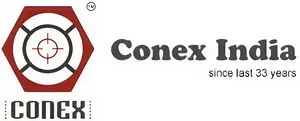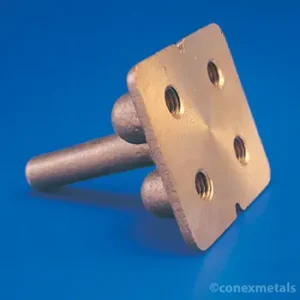Earth Plates
Earth Plates
| Earth Plates | |
|---|---|
| Serial Number | SIZE (A x B x C) |
| 1 | 600 x 600 x 1.5 |
| 2 | 600 x 600 x 3 |
| 3 | 600 x 600 x 5 |
| 4 | 500 x 500 x 3 |
| 5 | 500 x 500 x 5 |
| 6 | 900 x 900 x 3 |
| 7 | 900 x 900 x 5 |
| 8 | 1000 x 1000 x 3 |
| 9 | 1000 x 1000 x 5 |
 Earth plates, also known as grounding plates or grounding electrodes, are components used in grounding systems to establish a low-resistance electrical connection with the Earth. They are buried in the ground and serve as an interface between the electrical system or equipment and the Earth’s conductive surface.
Earth plates, also known as grounding plates or grounding electrodes, are components used in grounding systems to establish a low-resistance electrical connection with the Earth. They are buried in the ground and serve as an interface between the electrical system or equipment and the Earth’s conductive surface.
Key features and uses of earth plates include:
- Material: Earth plates are typically made of metal, such as Copper or galvanized Steel, to provide good electrical conductivity and resistance to corrosion.
- Burial: Earth plates are buried in the ground, ensuring that they are in direct contact with the Earth’s soil. The depth of burial may vary depending on local electrical codes and the soil conditions.
- Grounding System: Earth plates are an integral part of grounding systems, which are designed to protect against electrical faults, lightning strikes, and static charges.
- Connection: The grounding conductor from the electrical system or equipment is connected to the earth plate using a grounding wire or cable, establishing a reliable electrical connection with the Earth.
- Size: The size of the earth plate is determined by factors such as the expected fault current, soil resistivity, and the specific requirements of the grounding system.
- Ground Resistance: Earth plates play a significant role in determining the overall ground resistance of the grounding system. Lower ground resistance helps ensure effective dissipation of fault currents and lightning strikes.
- Lightning Protection: In addition to providing a safe path for fault currents, grounding systems with earth plates are also used in lightning protection systems to safely disperse lightning currents into the ground.
Earth plates are commonly used in various electrical applications, including residential, commercial, and industrial settings. They are found in grounding systems for electrical panels, substations, transformers, lightning protection systems, telecommunications equipment, and more.





